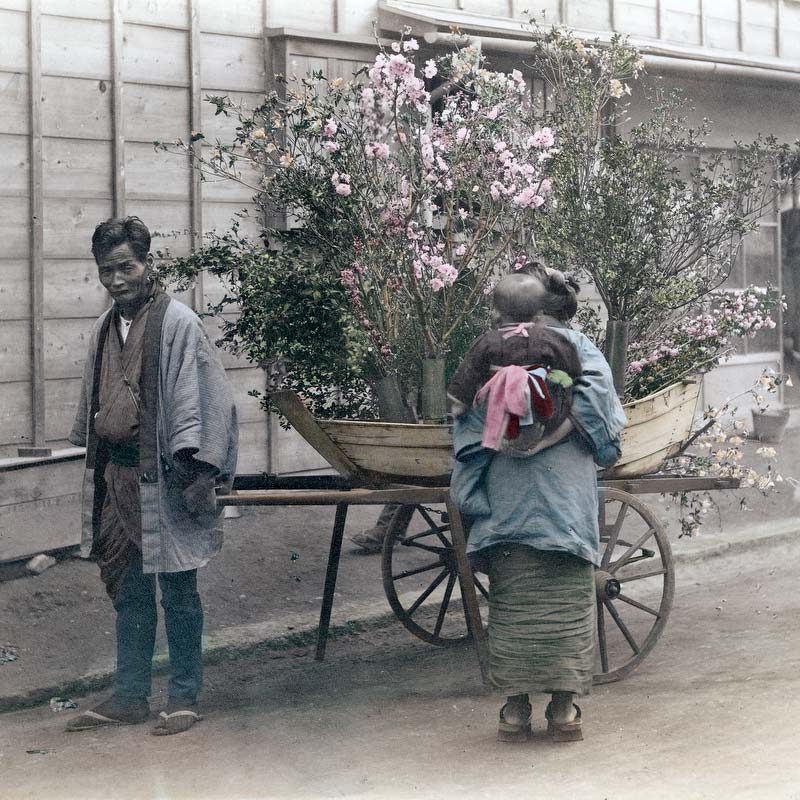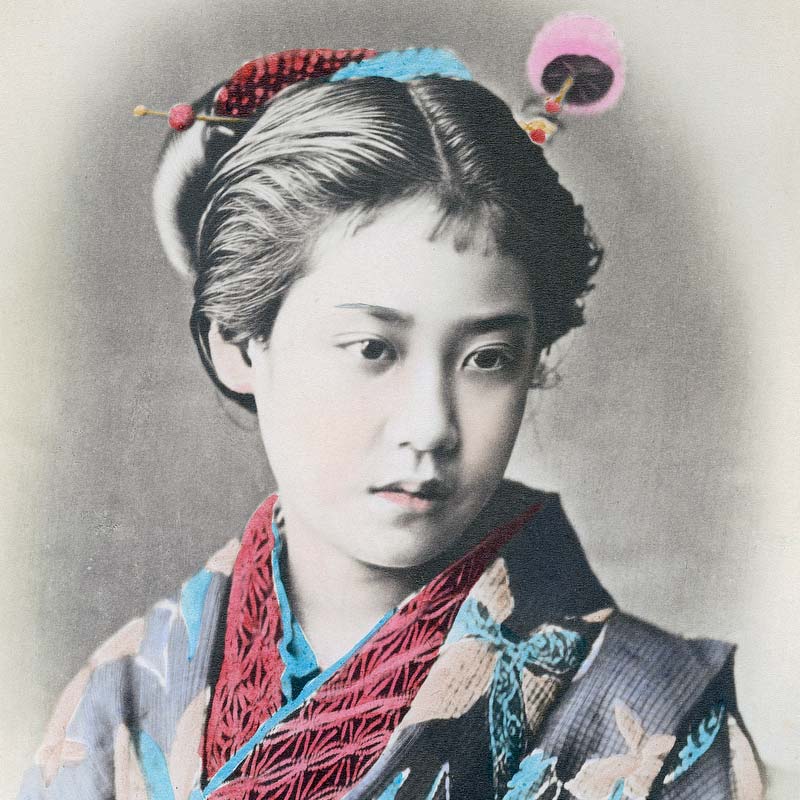An absolutely gorgeous photograph of a Shinto priest wearing vestments.
Shinto is native to Japan and was originally a strongly local form of worship. It is older than Japan itself and existed before there was a unified nation.
Worshipped are kami (deities), which are often ancestors, natural objects (for example Mount Fuji or a particular tree) and natural processes, such as fertility and growth. More than worship, though, it is the tension between purity (清め, kiyome) and impurity (穢れ, kegare), and the strong emphasis on cleansing impurities from one’s life and space that makes Shinto what it is. Many of the rites and ceremonies in Shinto are specifically performed to cleanse out kegare.
While religions like Christianity or Islam since their early days have especially been worshipped in congregations at a set location like a church or mosque, shinto was originally a part of daily life and therefore experienced anywhere and more often individually than in groups, although seasonal matsuri (religious festivals) have always been very important as well.
Shinto shrines were actually developed in response to the introduction of buddhism and buddhist temples during the Asuka (538 to 710) and Nara Period (710 to 794). Until then, sacred places did exist but had no buildings.
During this period, Japan was only partly under control of the Imperial family. To legitimize their rule, the Kojiki and the Nihon Shoki were written and a unified account of Japanese myths and legends were given. Japan had lots of creation and other myths and legends, but the ones of the Imperial family were singled out and emphasized to give the family’s rule legitimacy. At the same time, Daoist, Confucian, and Buddhist concepts were introduced to simplify central rule.
Many of the myths that are now seen as universally Japanese, like the stories about Izanami, Izanagi and Amaterasu, were actually originally local beliefs.
It is often written that Shinto tolerated Buddhism, but generally it was more like a fusion of the two, with Buddha seen as just another kami. This fusion is called Shinbutsu Shugo (神仏習合) and resulted in something basically resembling a new religion. How this, and Shinto in particular, evolved is still a point of much controversy.
What is clear though, is that as early as the Nara Period, temples and shrines were built together, with one “guarding” the other. This can still be seen at many Bhuddist temples today, such as at Shoshazan Engyo-ji in Himeji.
During the end of the Edo Period, there was a surge of interest in Native Studies (国学, Kokugaku), trying to explain what made the Japanese unique. Scholars attempted to distinguish what was really Japanese from what was a foreign import. Major influence on this thought was exerted by the Mitogaku of the Mito Domain and people like Motoori Norinaga (本居宣長, 1730-1801).
Their thoughts would eventually have a huge impact during the Meiji Restoration when Shinto was made the state religion and its connection to Buddhism was outlawed. Unfortunately, this meant that Shinto ended up playing a huge role in Japan’s disastrous love affair with militarism.
Due to State Shinto’s questionable role during WWII, it was officially discontinued after the end of the war and separation of church and state was codified by the 1947 Constitution of Japan.
After the war, Shinto was forced to find a new role and often reverted to its pre-Imperial Family state as a folk religion. It is now divided into several different types, in which Shrine Shinto, overseen by the Association of Shinto Shrines, plays the most influential role.
Notes
1 The Encyclopedia of Shinto contains a good list of Ritual Implements and Vestments.
2 This image is usually attributed to Kimbei Kusakabe, but British photography researcher Terry Bennett attributes the image to Adolfo Farsari.
Published
Updated
Reader Supported
Old Photos of Japan aims to be your personal museum for Japan's visual heritage and to bring the experiences of everyday life in old Japan to you.
To enhance our understanding of Japanese culture and society I track down, acquire, archive, and research images of everyday life, and give them context.
I share what I have found for free on this site, without ads or selling your data.
Your support helps me to continue doing so, and ensures that this exceptional visual heritage will not be lost and forgotten.
Thank you,
Kjeld Duits
Reference for Citations
Duits, Kjeld (). 1880s: Shinto Priest, OLD PHOTOS of JAPAN. Retrieved on December 12, 2025 (GMT) from https://www.oldphotosjapan.com/photos/124/shinto-priest




Matt
Another fascinating article. Thanks! Wonderful photograph.
#000193 ·
Kjeld Duits (Author)
Thanks, Matt!
Always wonderful to get feedback. This photo is indeed a real beauty, isn’t it? The priest’s face has so much character, the clothes are wonderful and the simple coloring is just magic, extremely well-done.
#000194 ·
Cristina
Amazing!
#000448 ·